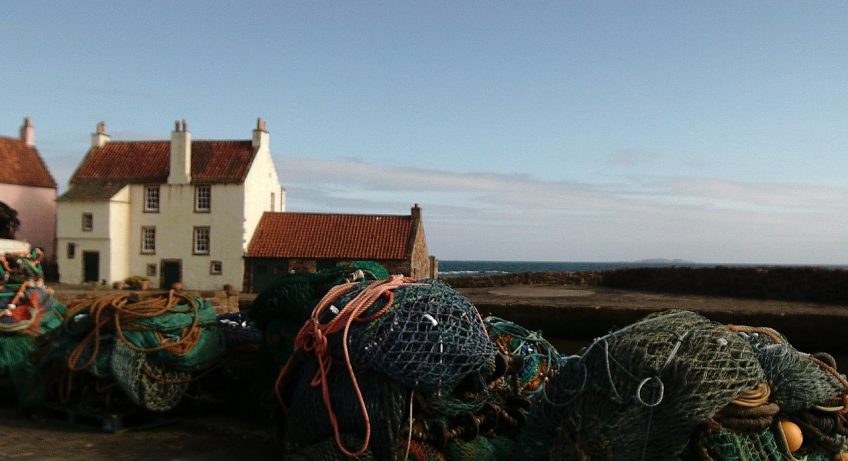Pittenweem is 25 miles south of Dundee on the east coast of Scotland.
It is a historic fishing port and the village of Pittenweem clusters around a small circular harbour. The village is named after the Celtic words for ‘town of the cave’, referring to the ancient cave of St Fillan on Cove Wynd there.
Folklore has it that the cave was the residence of the legendary saint Fillan in the 7th-century, who was able to read and write in the dark cave by the light of a mysterious glow emitted by his left arm. These days the cave is a shrine to him, and there is in the cave is the Saint’s Well and a small altar, it’s still used by modern pilgrims.
An ancient stairway leads up through the solid rock to the Priory Gardens, but this access is now closed to visitors, and a wrought iron gate blocks access. There are two main chambers to the cave, which was restored in 1935. The cave is normally locked, but a key can be obtained from nearby Cocoa Tree Cafe and Chocolate Shop just up the hill on High. The town grew up around the priory and became such an important centre of trade that it was granted the status of a Royal Burgh in 1541. That status meant that Pittenweem had the right to trade with other countries, and the right to govern itself through a burgh council.
The prosperity of Pittenweem was assured when the Augustinian priory on the Isle of May moved there in order to escape from plundering by pirates at their island location. There was already a church there, and the priory was built over St Fillans cave.
By 1587 Pittenweem was the 12th richest place in all of Scotland, quite a feat for a seaside village.
The village has a royal burgh to hold a weekly market and three annual fairs. It is also a location that was synonymous with the 16th and 17th witch hunts, and the first floor cells of the Tolbooth was where they were held for questioning. The Tolbooth is still there today.
As well as the cave and the priory, Pittenweem has been a fishing village since early medieval times and the village spread along the shoreline, originally fishermen would have dragged their boats up the sheltered beaches for safekeeping, but at some point, a breakwater was built allowing boats to rest at anchor and enabled the use of larger fishing boats.
Pittenweem has the classic East Neuk buildings of white houses with red-tiled roofs, and the red tiles were originally used as ballast in the ships of visiting ships from Belgium and the Netherlands. The village is described as being one of Scotland’s best-preserved and most attractive landscapes. The town has many winding alleyways and streets and offers many interesting historic buildings some under the care of National Trust for Scotland.
The harbour area of the village is where the lovely old houses are to be found, whilst the upper area has shops, the churches and contemporary housing.
The harbour is also the location of the daily fish markets from the Pittenweem fishing fleet.
Picture by marilynreid on Pixabay

